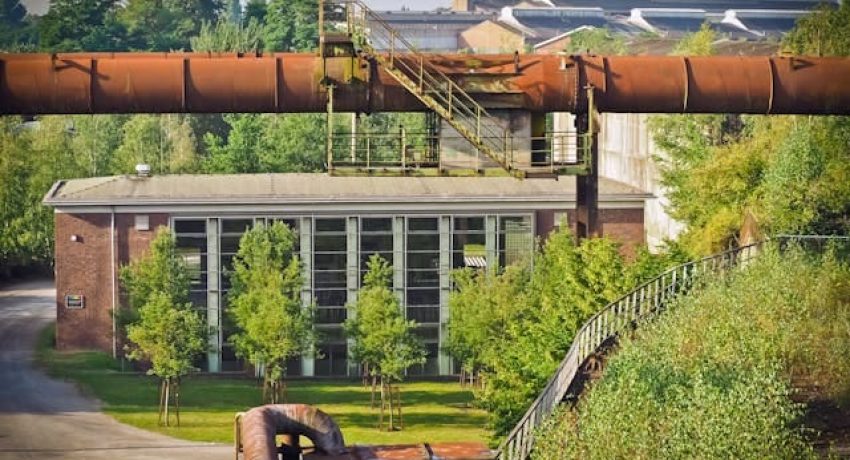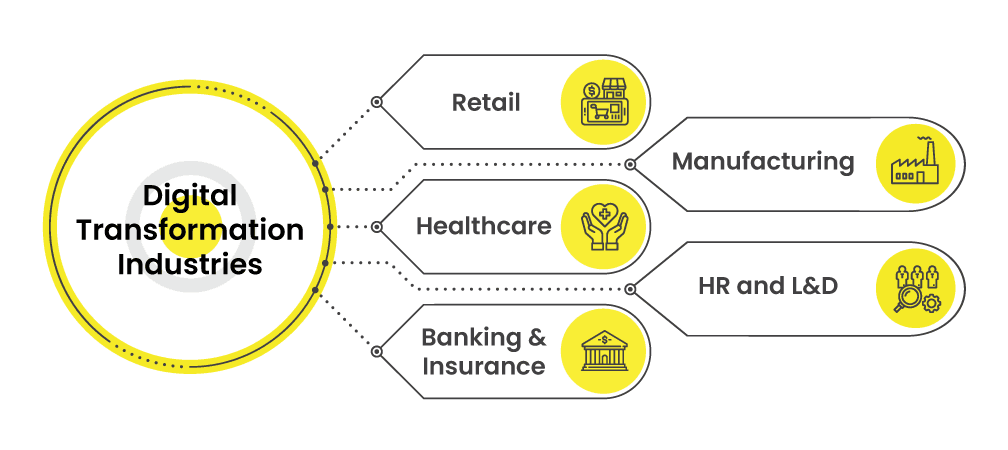
TRANSFORMING INDUSTRIES AND DRIVING SUSTAINABLE SOLUTIONS IN 2025
Digitalization, the process of integrating digital technologies into various facets of business, governance, and daily life, has had a profound impact on industries worldwide. As we move towards 2025, digital transformation is not only reshaping the way businesses operate but also driving sustainable solutions across multiple sectors. From energy efficiency to waste reduction, digital technologies are enabling industries to innovate, optimize, and adopt practices that benefit both their bottom lines and the planet.
In this article, we will explore how digitalization is transforming industries, driving sustainability, and paving the way for a greener, more efficient future. We will examine specific industries like manufacturing, agriculture, energy, healthcare, and transportation, and highlight the role of digital solutions in fostering environmental sustainability, resource conservation, and social responsibility.
The Role of Digitalization in Driving Sustainability
Digitalization enables businesses to improve their operational efficiency, reduce resource consumption, and innovate in ways that contribute to sustainability. Technologies like cloud computing, Internet of Things (IoT), artificial intelligence (AI), and blockchain are at the forefront of this transformation. By gathering and analyzing vast amounts of data, digital tools can offer insights into energy usage, waste management, and resource optimization, helping industries minimize their environmental impact.
In the context of sustainable development, digitalization supports the goals set by international agreements such as the United Nations Sustainable Development Goals (SDGs). These goals emphasize the need for clean energy, responsible consumption and production, climate action, and sustainable economic growth. Digital technologies are helping to achieve these objectives by improving efficiency, reducing emissions, and promoting circular economy models across industries.
1. Sustainable Manufacturing through Digital Technologies
Manufacturing has long been a major contributor to environmental degradation, with high energy consumption, waste generation, and carbon emissions. However, digitalization is helping the manufacturing sector reduce its environmental footprint while improving operational efficiency.
Smart manufacturing, powered by IoT, AI, and data analytics, is revolutionizing the industry by enabling real-time monitoring and optimization of production processes. IoT sensors embedded in machines and production lines can track energy consumption, detect inefficiencies, and identify potential areas for improvement. This data is analyzed to make informed decisions that reduce waste, energy usage, and downtime.
For example, AI-powered predictive maintenance can ensure that equipment is operating at peak efficiency, preventing unnecessary repairs and extending the life of machinery. Additionally, digital technologies allow manufacturers to implement closed-loop systems, where materials are recycled and reused within the production process, significantly reducing waste and contributing to the circular economy.
Another significant innovation in sustainable manufacturing is 3D printing, or additive manufacturing. This technology reduces material waste by only using the exact amount of material needed for each part, minimizing scrap and leftover materials. Furthermore, 3D printing enables the production of lightweight, high-strength components that can reduce the energy consumption of end-products.
2. Sustainable Agriculture through Digital Solutions

Agriculture is another sector where digitalization is making a significant impact on sustainability. Traditional farming methods are resource-intensive, requiring large amounts of water, fertilizers, and pesticides, often resulting in soil degradation, water pollution, and greenhouse gas emissions. However, the integration of digital technologies is transforming how agriculture operates, enabling farmers to reduce their environmental impact while improving crop yields and efficiency.
Precision agriculture, powered by IoT sensors, satellite data, and AI, allows farmers to monitor soil conditions, weather patterns, and crop health in real-time. This data helps them make more informed decisions about irrigation, fertilization, and pest control, ultimately reducing the use of chemicals, conserving water, and minimizing the environmental impact of farming.
For example, IoT-based soil moisture sensors enable farmers to apply water only when necessary, reducing water waste and improving crop yield. Drones are also being used to monitor crops from above, providing detailed images and data that help identify issues such as pest infestations or nutrient deficiencies early, preventing the use of excessive pesticides or fertilizers.
Furthermore, AI-driven analytics can predict crop yields based on historical data, weather conditions, and soil quality, helping farmers optimize planting schedules and reduce resource usage. Digital platforms also enable farmers to access weather forecasts, market prices, and supply chain information, improving their overall decision-making process.
3. Energy Efficiency and Renewable Energy Solutions
Digitalization is playing a critical role in the transition to renewable energy sources and the optimization of energy use across industries. As the global demand for energy continues to grow, the need for cleaner, more sustainable energy solutions has never been greater. Digital technologies are helping industries reduce their reliance on fossil fuels and increase energy efficiency.
One of the most significant innovations in this area is the smart grid, a digitalized energy system that uses sensors, meters, and software to monitor and manage the distribution of electricity. Smart grids allow for real-time monitoring of energy consumption, enabling utilities to identify inefficiencies and optimize energy distribution. This can result in lower energy costs, reduced waste, and a more reliable energy supply.
AI and machine learning are also being used to optimize energy consumption in commercial and residential buildings. Smart thermostats, lighting systems, and energy management platforms allow building owners to reduce energy usage based on real-time occupancy data and environmental conditions. These systems can automatically adjust heating, cooling, and lighting to maximize energy efficiency without sacrificing comfort.
In the renewable energy sector, digital tools are enabling more efficient energy generation and distribution. For example, AI algorithms are used to predict energy generation patterns from solar panels and wind turbines, helping energy providers better manage supply and demand. Additionally, digital technologies are facilitating the integration of renewable energy sources into existing power grids, making it easier to balance renewable energy generation with traditional sources of energy.
4. Transportation and Mobility: Digitalization for Sustainability
The transportation industry is another key sector in the drive for sustainability. It is a major contributor to greenhouse gas emissions, air pollution, and traffic congestion, but digital technologies are helping mitigate these issues by improving the efficiency and sustainability of transportation systems.
Electric vehicles (EVs) are a central part of the transition to a sustainable transportation system, and digitalization plays a crucial role in accelerating the adoption of EVs. The use of AI and data analytics can optimize charging station networks, ensuring that EVs are charged in the most efficient locations and at the most cost-effective times. Additionally, AI algorithms can help optimize the operation of EVs, improving energy efficiency and reducing battery consumption.
In addition to EVs, digitalization is enabling new mobility solutions such as shared transportation and autonomous vehicles. Ride-sharing platforms like Uber and Lyft have reduced the need for private car ownership, which can help reduce traffic congestion, lower emissions, and decrease the environmental footprint of transportation.
Smart cities, which leverage IoT sensors, AI, and data analytics to improve urban infrastructure, are also contributing to more sustainable transportation. These cities can use data to optimize traffic flow, reduce emissions, and encourage the use of public transportation, biking, and walking. Digitalized transportation networks can reduce the environmental impact of commuting and make cities more livable and sustainable.
5. Healthcare: Digitalization for a Greener Future
The healthcare sector is increasingly adopting digital technologies to enhance patient care, improve operational efficiency, and reduce its environmental impact. The healthcare industry is resource-intensive, with high energy consumption, waste generation, and paper usage. However, digitalization offers significant opportunities to reduce the environmental footprint of healthcare while improving health outcomes.
One of the most significant contributions of digitalization to sustainability in healthcare is the reduction of paper waste. Electronic health records (EHRs), telemedicine, and digital prescriptions have significantly reduced the need for paper documentation, contributing to less paper waste and lower resource consumption.
Telemedicine, in particular, has gained popularity in recent years as a result of digitalization. By enabling patients to consult with healthcare professionals remotely, telemedicine reduces the need for travel, minimizing carbon emissions and reducing congestion in healthcare facilities. Moreover, telemedicine allows for more efficient use of healthcare resources, as it enables doctors to see more patients in less time and eliminates the need for many in-person visits.
AI and machine learning are also helping healthcare providers make more informed decisions, improving patient outcomes while reducing unnecessary treatments and resource use. For example, AI-driven diagnostic tools can help doctors identify diseases earlier, leading to more targeted treatments and reducing the need for extensive diagnostic procedures.
SUSTAINABLE SOLUTIONS

Challenges in Achieving Digitalization for Sustainability
While digitalization offers numerous opportunities for sustainability, there are several challenges that need to be addressed. These include:
1. Data Privacy and Security Concerns
The collection and analysis of vast amounts of data are at the heart of digitalization. However, the increased use of digital technologies raises concerns about data privacy and cybersecurity. Industries must ensure that sensitive data is protected and that digital solutions comply with privacy regulations.
2. Digital Divide
Not all regions and populations have equal access to digital technologies. The digital divide can exacerbate social inequality and hinder the widespread adoption of digital solutions that contribute to sustainability. Governments and businesses must work together to ensure that digital technologies are accessible to all, particularly in underserved areas.
3. Technological Integration and Infrastructure
The integration of digital technologies into existing infrastructure can be challenging, particularly in industries with legacy systems. Businesses must invest in the necessary infrastructure and training to successfully adopt and implement digital solutions.
4. Regulatory and Policy Challenges
Regulatory frameworks around digitalization and sustainability are still evolving. Governments need to develop policies that encourage the adoption of sustainable technologies while ensuring that digitalization does not lead to unintended negative consequences, such as increased e-waste or data exploitation.
Conclusion
Digitalization is revolutionizing industries and driving sustainable solutions across multiple sectors. By embracing technologies such as AI, IoT, cloud computing, and blockchain, businesses and governments are able to optimize resources, reduce waste, and contribute to a greener, more sustainable future. While challenges remain, the potential for digitalization to drive sustainable development in 2025 and beyond is immense. By leveraging digital tools to innovate and optimize, industries can create new business models that benefit both the environment and society as a whole, paving the way for a more sustainable and prosperous world.
zuni
comments
Comments
related posts

Glow Naturally: Urban Hydration Skin Wellness

AFFORDABLE BEACH TOWNS IN MISSISSIPPI: PASCAGOULA SHINES BRIGHT

Best Budget Travel Destination Europe 2025 Revealed

CDC Vaccine Advisory Panel 2025: RFK Jr.’s Bold Dismissal Sparks Debate

Meta Faces Pressure to Combat Investment Scams on Facebook





